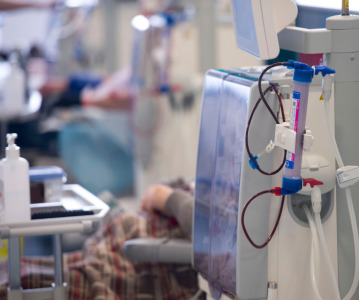Lilly's Trulicity label updated to include use in combination with basal insulin for adults with type 2 diabetes

Trulicity is a once-weekly glucagon-like peptide-1 (GLP-1) receptor agonist injectable prescription medicine.
The label for Eli Lilly's once-weekly Trulicity (dulaglutide) is now updated to include use in combination with basal insulin for adults with type 2 diabetes. The FDA included the changes to the approved product labeling to reflect this important information for prescribers. Trulicity is available in a prefilled pen in 0.75 and 1.5 mg doses.
"Despite best efforts to manage their A1C, many adults with type 2 diabetes may need to add to or change their treatment plan to help them reach their blood sugar goals," said Sherry Martin, vice president, Global Medical Affairs, Lilly Diabetes. "They now have the option to use Trulicity, with its powerful efficacy in a once-weekly, easy-to-use pen, along with basal insulin for even greater control."
Trulicity is a once-weekly glucagon-like peptide-1 (GLP-1) receptor agonist injectable prescription medicine to improve blood sugar (glucose) in adults with type 2 diabetes. It should be used along with diet and exercise.
Trulicity is not recommended as the first medication to treat diabetes. It has not been studied in people who have had inflammation of the pancreas (pancreatitis). It is not a substitute for insulin. Trulicity should not be used by people with type 1 diabetes, people with diabetic ketoacidosis, or people with a history of severe stomach or intestinal problems. It has not been studied in children under 18 years of age.
Trulicity has a Boxed Warning about potential thyroid tumors, including cancer. It should not be taken by someone with a personal or family history of medullary thyroid cancer, a personal history of Multiple Endocrine Neoplasia syndrome type 2, or an allergy to Trulicity.
The Trulicity label update is based on FDA review of results from the AWARD-9 clinical trial, a Phase IIIb, randomized, double-blind, placebo-controlled, 28-week study that evaluated the efficacy and safety of once-weekly Trulicity 1.5 mg as an add-on to titrated insulin glargine, with or without metformin, compared with placebo as an add-on to titrated insulin glargine, with or without metformin. Study results showed that Trulicity 1.5 mg significantly reduced A1C as an add-on to insulin glargine after 28 weeks compared to placebo plus insulin glargine.
The label was also updated to include results from the AWARD-8 clinical trial, a Phase IIIb randomized, double-blind, placebo-controlled, 24-week study that evaluated the efficacy and safety of Trulicity 1.5 mg as an add-on to sulfonylurea compared to placebo plus sulfonylurea.
Trulicity was first approved in September 2014 as a once-weekly injectable prescription medicine to improve blood sugar (glucose) in adults with type 2 diabetes, based in part on results from five Phase 3 studies of Trulicity used alone or in combination with other diabetes medications, including metformin, pioglitazone, glimepiride and insulin lispro. With this update, Trulicity is the first and only GLP-1 receptor agonist with a label that allows its use in combination with mealtime insulin or basal insulin.
Related News
-
News US FDA adds haemodialysis bloodlines to devices shortage list
On March 14, 2025, the US FDA published an open letter to healthcare providers citing continuing supply disruptions of haemodialysis bloodlines, an essential component of dialysis machines. -
News Vertex Pharmaceuticals stock jumps as FDA approves non-opioid painkiller
UK-based Vertex Pharmaceuticals saw their stock shares soar as the US FDA signed off on the non-opioid painkiller Journavx, also known as suzetrigine, for patients with moderate to severe acute pain, caused by surgery, accidents, or injuries. -
News Lessons from CPHI Milan 2024: Sunny Intervals for Pharma Manufacturing?
As the 2024 CPHI conference wrapped up in Milan, we caught up with L.E.K. Consulting – a global strategy consulting firm with deep expertise in pharma manufacturing – to discuss evolving market perspectives and business outlook. -
News US BIOSECURE Act passed by US House of Representatives
The controversial act, which has already impacted several foreign companies operating in the US, was passed by the House of Representatives on September 9, 2024. It is now headed for the US Senate before it can be signed into law by President Joe Biden... -
News Pharma Supply Chain People Moves
The latest appointments, promotions, and structural changes across the pharmaceutical supply chain. -
News Drug prices agreed upon as part of the US Inflation Reduction Act
The Inflation Reduction Act brought into constitution by the Biden administation in 2022, which proposed a drug price negotiation between the government and pharmaceutical companies, has reached it's first agreement. -
News BIOSECURE Act continues to loom over Chinese pharma manufacturers
With the US BIOSECURE Act on its way to passing into legislation, Chinese companies are facing declining revenues within the first half of 2024 as US pharmaceutical and healthcare companies pull their businesses from the country. -
News Ophthalmologic drug product Eylea faces biosimilar threats after FDA approvals
Regeneron Pharmaceutical’s blockbuster ophthalmology drug Eylea is facing biosimilar competition as the US FDA approves Biocon’s Yesafili and Samsung Bioepis/Biogen’s Opuviz.
Recently Visited
Position your company at the heart of the global Pharma industry with a CPHI Online membership
-
Your products and solutions visible to thousands of visitors within the largest Pharma marketplace
-
Generate high-quality, engaged leads for your business, all year round
-
Promote your business as the industry’s thought-leader by hosting your reports, brochures and videos within your profile
-
Your company’s profile boosted at all participating CPHI events
-
An easy-to-use platform with a detailed dashboard showing your leads and performance






.png)
.png)